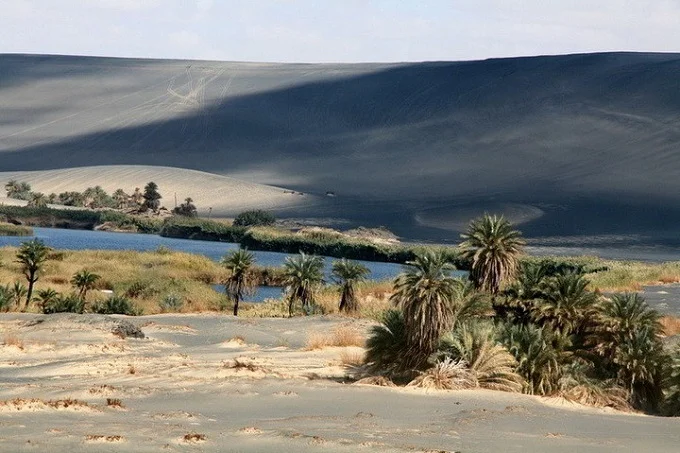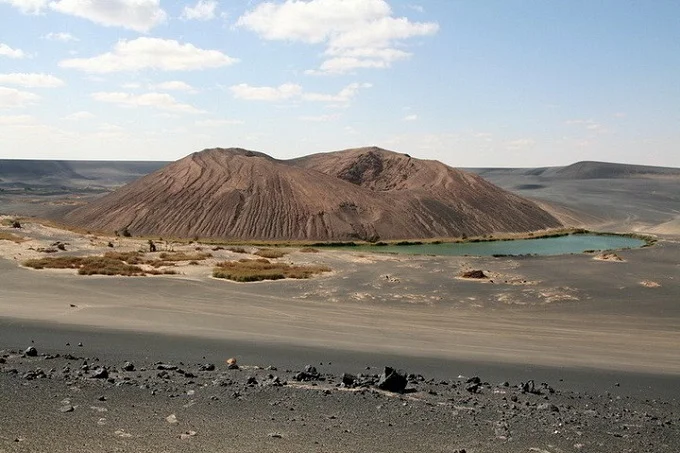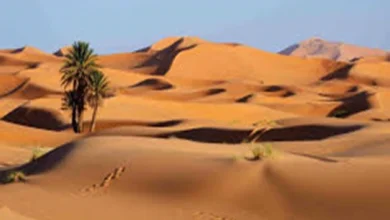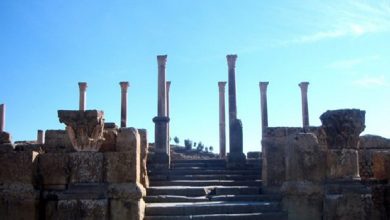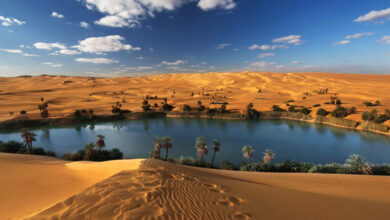Wau an-Namus – The blackspot in Libya
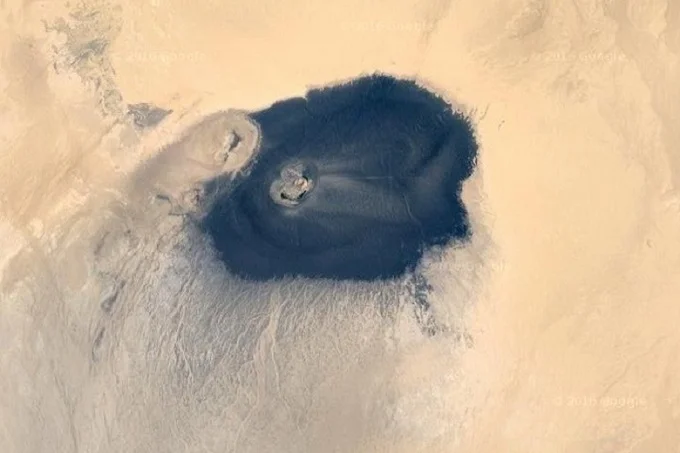
Wau an-Namus, for example, is a crater of an extinct volcano surrounded by several tiny salty and colorful lakes. In the midst of a dead vacuum, a nearly flawless oasis. It is located close to the middle of the Sahara desert.
Almost everyone has heard the term “white spot”. This term refers to anything unknown and shrouded in mystery. And we’ll use the term “black spot” as a starting point, and you’ll see why a little later. Even Libya, which has been suffering for a long time, offers some fascinating views.
Wau an-Namus, for example, is a crater of an extinct volcano surrounded by a number of tiny salty and colorful lakes. Amid a dead vacuum, a nearly perfect oasis. Wau an-Namus (translated from Arabic means a mosquito oasis). You got it: the term originates from the huge amount of mosquitoes that dwell in the region.
Wau an-Namus is a little out of the way from the usual hiking routes. It is located in the extreme south of the nation, nearly in the middle of the Sahara Desert.
The location of Wau an-Namus on the map
- Coordinates of location 17.765562, 24.916086
- About 1000 kilometers from Libya’s capital, Tripoli.
- The closest airport, Gardaba in Sirte, is approximately 700 kilometers away.
You can notice a big black patch on the brilliant yellow body of the Sahara if you look at Wau an-Namus from space or even an aircraft (not everyone has enough money for space travel). It’s not quite as large as the Eye of the Desert, but it’s certainly visible.
Around the crater, the volcanic area is approximately 4 kilometers broad. Furthermore, ash deposits are scattered throughout everything within a 10-to-20-kilometer radius. A 120-meter ash mountain stands in the middle of an oasis at the foot of a caldera (a volcanically formed depression).
There is fresh water in addition to salt lakes
The occurrence of freshwater alongside salty water is quite frequent in the Sahara. In the past, this was critical for caravans making lengthy desert trips. In 1862, Karl Moritz von Beurmann was the first to tell us about this location. However, he was not present.
Laurent Lapierre, a Frenchman, was the first European to visit the mosquito oasis in 1920. He was a captive officer who was brought here. Only a few years after his release was he able to reveal this.
Ardito Desio, an Italian geologist, arrived in Wau an-Namus after 11 years. Then came the creation of a more or less professional explanation of this attraction.
In 1935, the geologist published his study. Since then, several scientists have visited the volcano, including geographer Nikolaus Benjamin Richter, who wrote a book on his journeys in 1960. The extinct volcano piqued the attention of many people, not only scientists.
This attraction is now attracting regular visitors as well, and it is growing more popular. It’s not easy to get here, but it’s possible. All you need to remember is to bring anti-mosquito items and a basic travel kit.
Wau an-Namus photos

